Building Children’s Confidence In Maths – Top 10 Teaching Strategies
Maths anxiety can have a huge impact on learning but it is fixable! Building children’s confidence in maths is made easy using these teaching strategies…

Building Children’s Confidence In Maths: Guest blog by John Dabell – Primary Teacher and Writer
In this blog I will consider why so many people suffer from maths anxiety and the ways in which we can go about building children’s confidence in maths:
Why do children struggle with maths confidence?
Ten teaching strategies for building children’s confidence in maths
Why do children struggle with math confidence?
Mathematicians will tell you that it is a living, connected and beautiful subject. I have compiled a list of teaching strategies in a quest to spread of the joy of this subject by building children’s confidence in maths!
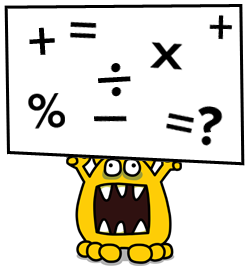
In an anti-maths culture, it is little surprise that confidence in maths is rarer than hen’s teeth. Some people are happy to divorce themselves from maths and say they “can’t do it”. They keep maths at arms-length and proudly disconnect themselves from it – being asked on the spot questions like “What is 7 x 8?” is their worst nightmare! Without a strong mathematical foundation, many adults grow up to be disadvantaged and vulnerable.
As Jo Boaler says in her excellent book ‘The Elephant in the Classroom’…
“Mathematics plays a unique role in the learning of most –children it is the subject that can make them feel both helpless and stupid. Maths, more than any other subject, has the power to crush children’s confidence, and to deter them from learning important methods and tools for many years to come.”
Where does this maths phobia stem from?
Most people with a fear of maths have had negative, traumatic or excluding maths experiences that have caused embarrassment or humiliation. They may have experienced maths failure. They could have picked up negative attitudes about maths from their peers or family. Perhaps they have had insensitive teachers or been taught by under confident teachers.
Maths avoidance is an acquired anxiety which can have a huge impact on learning but it is fixable. A number of teaching strategies can be used to address maths anxiety and help children to move from a position of mathematical vulnerability to mathematically resilient learners. Read on for my top ten strategies for building children’s confidence in maths…
10 Teaching strategies for building children’s confidence in maths
1. Encourage mistake-making
For children to work successfully, they need to feel confident about talking through concepts and making mistakes along the way. It is important to encourage them to discuss their ideas and so providing safe and secure contexts are vital.
One way to do this would be to use maths concept cartoons. These are cartoon-style drawings that put forward a range of viewpoints about a maths concept and set up a debate and discussion so children can discuss ideas together. For example…

Using concept cartoons helps overcome maths anxiety by building positive behaviour and healthy responses. Children can overcome obstacles to learning, persevere and acknowledge that mistakes are part of the learning process. They make risk-taking and arguing the norm building mathematical resilience.
By acknowledging all contributions positively and valuing different ways of thinking, we can use mistakes and so-called ‘wrong’ answers as the springboard to new understanding.
The experience of making errors in a safe environment can lead to higher performance. Remember too that maths isn’t a discrete subject that is taught in isolation. Maths transcends subject boundaries so make it visible as often as possible when teaching across the curriculum.
2. Dispel maths myths
Some children have the idea that you are either good at maths or you’re not. This binary perspective isn’t helpful because it adopts a fixed mind-set. Maths ability is something that is grown, nurtured and extended. Children may feel that they “aren’t any good at maths” but this is a myth, every child has maths potential; with effort everyone is capable of improving their maths knowledge.
We can ensure that children don’t fall into a maths trap by focussing carefully on the words we use and helping children to recognise that everyone is ‘maths smart’.

Be alert and vigilant to any “can’t do” talk by promoting a culture of “everyone is a mathematician”. Spot children’s individual strengths and build on them so that children believe in themselves. Draw attention to the diversity of your class and remind children that everyone is ‘smart’ with different strengths in different areas. Everyone has something important to offer when working on maths.
3. Create a love for maths
Teachers who are evangelical about maths often inspire children to become maths munchers. They help children to see that they can do maths and they can think mathematically.
Teachers with a real passion for maths help children to question, challenge and reflect by creating an atmosphere of positivity. They nurture curiosity, they structure their investigative potential and they build self-assurance.

Maths has to be brought to life through plenty of action, emphasis and strategies for making the maths memorable!
For example; animation through voice and body. Drama and role-play. Humour, jokes and use of props. Suspense and surprise. Rhe creative use of classroom space. Music, songs and dance….anything that brings maths to life.
Why not use hip-hop to teach maths vocabulary?! Times table songs are perfect for getting children on board and for developing a love of maths. They let them take ownership and become part of the maths. Take a look at Percy Parker for example; www.percyparker.com
4. Keep it open
Maths is often seen as a subject with right or wrong answers but maths is far from being black and white. Maths involves many opportunities for exploring open-ended investigations and these illustrate what a vibrant, dynamic and rich subject maths can be.
Activities that provoke thinking and get children to justify their thinking are valuable learning curves. They allow learners to compare the alternatives, explore ideas together and look for evidence to support their thinking.
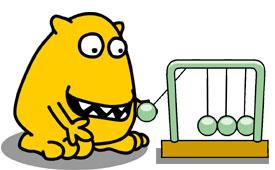
Here are some open-ended activity ideas:
Why not try odd one out activities where children work collaboratively to select the misfit from a list of numbers or shapes (see examples here: www.wodb.ca/). This could be done as a balloon debate: A hot air balloon is losing height, children have to decide which numbers in the basket should be asked to leave!
You could try True-False activities presented as ‘always, sometimes and never’ statements. Ask children to discover, debate and discuss statements such as “Multiplying a number always makes it bigger”.
Busy Things includes many open-ended maths activities, widgets and demos. You can take a free trial to explore all of their curriculum-linked activities here: Take a free Busy Things trial.
5. Provide space and time
Maths comes with a speed limit. You can’t race through topics because you miss too much and there is a real possibility you’ll crash along the way. Mathematical thinking and confidence is supported within an atmosphere of “I can” fuelled by ample space and time so children can get stuck and unstuck through exploration, surprise and practice – this is key to building children’s confidence in maths.
Talking is critical to maths learning and to giving children the depth of understanding they need. We need therefore to organise productive mathematical discussions to allow children the time to discuss and show what they know, what they don’t know and what they partly know.

The 10/2 ‘Chunk, Chew and Check’ strategy:
One strategy you can employ is the 10/2 ‘Chunk, Chew and Check’ strategy; a way of teaching that has been found to be highly effective in supporting understanding of concepts big and small. It works like this:
- You break lesson information or content down into manageable ‘chunks’ and allow time for children to ‘chew’ or digest the material.
- Children receive 10 minutes of rich teaching input and deep content (listening, watching, reading etc.)
- Children are then given 2 minutes to chew and digest the content sharing with a classmate or writing notes individually.
- You check that everyone understands before moving on.
6. Play games
Mathematical games are a must-have because they are engaging, fun and motivating.
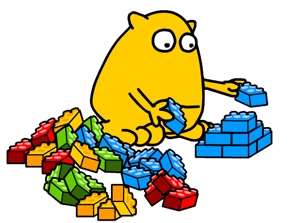
Games are a safe way to practice, fail and grow.
Why not go one step further; ask children to create their own maths games or adapt the rules of an existing game such as Snakes and Ladders.
The University of Cambridge website Nrich (www.nrich.maths.org/) contains a wealth of tasks of the highest quality to challenge, stimulate and engage children of all ages and abilities.
The wonderful Busy Things website contains some great, educationally sound, fun and engaging games and activities for Early Years and Primary Key Stage 1 and Key Stage 2. Make sure you take a free Busy Things trial to explore the vast resources they offer.
7. Make maths visible
Maths displays have a significant role to play in the classroom as they can feed curiosity and impact positively on learning.
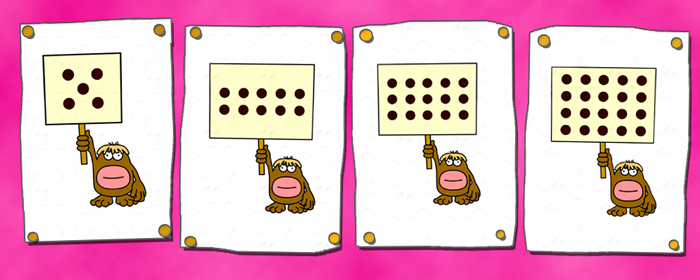
Engaging and colourful displays that are interactive and draw children in will make maths memorable and meaningful. Whilst commercial posters have their place, class-made displays can add a more three-dimensional and personal experience in helping children make sense of maths. Keep maths displays exciting and refreshing by updating and changing them regularly through the term.
Why not have a shape of the week and number of the week? And let them take centre stage on a display board. Children can place questions and statements around them and investigate their properties.
Living ‘shape and number’ boards are excellent ways to draw children into the world of maths. By making them high profile in class you are upgrading their thinking and understanding consciously and subconsciously.
Using QR codes in your classroom displays:
Add QR codes to your displays to enrich them and make them interactive. For example, print QR codes next to numbers with a question, such as how many factors do I have? Children guess the answer and then scan the code to see if they are correct. Display an investigation question and a QR code linking to websites or resources to help children find a solution.
You could video a maths method and put QR codes around the classroom so that children can scan and refer to them. You could provide a set of data along with a QR code; this can then take children to an online graphing resource where they can create their own graphs. Children can create their own maths problems and a web resource with their problem on it (website, audio, video, etc.) Their classmates can scan the QR codes and try to solve the problems.
Celebrate children’s work by including their maths efforts on a working wall. This could be a mixture of children’s actual work and photos of children actively involved in their own maths learning. If there isn’t enough room to display everything, a QR code could be used to link to an online display of their work. For more information about QR codes go to www.iteach-uk.com/resource/useful-things/qr-codes#.WbejjdVSyUk
8. Feedback and feed forward
Formative feedback helps to reduce the negative impact of maths anxiety and can supercharge confidence when given in a timely manner. Supplying children with specific information about what they are doing right or wrong is crucial because this helps to address misconceptions, identify weaknesses and plan next steps in learning.
It helps them to refine, revise, practice, retry and plan ahead. A mixture of both feedback and feed forward helps make sure that assessment has a developmental impact on maths learning and in building children’s confidence in maths.
Studies of effective teaching and learning have shown that learners want to know where they stand in relation to their work.
Providing answers to the following four questions on a consistent basis will help provide quality feedback…
- What can the learner do?
- What can’t the learner do?
- How does the learner’s work compare with that of others?
- How can the learner do better?
Feedback has to be immediate, targeted, concrete, action oriented, and confidence building.
Providing a one-on-one meeting with a child is one of the most effective means of providing this feedback/forward. Try meeting with a child while the other children are working independently.

Model for children what appropriate feedback looks like and sounds like and then help them to ‘peer conference’. Teach children to identify quality pieces of work and WAGOLL (What A Good One Looks Like).
9. Visit a science centre
Science centres and museums can take children on a journey of exploration and discovery that they will remember forever.
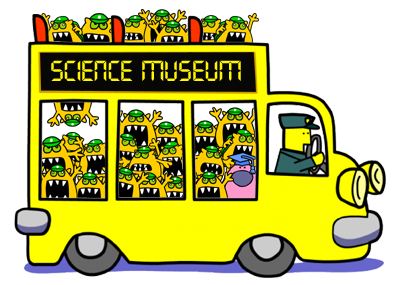
For inspiration, visit The Association for Science and Discovery Centres (ASDC) bringing together over 60 of the UK’s major science engagement organisations in the UK: https://www.sciencecentres.org.uk/centres/
10. Meet a maths hero
There are hundreds of inspiring maths maestros that we can introduce children to, some past and some present.

Introduce children to adults working in STEAM (Science, Technology, Engineering, Arts and Maths) occupations by inviting them into school to talk about their jobs and how maths helps them in their work.
A final note on building children’s confidence in maths…
Maths confidence is worth its weight in gold. Success in mathematics breeds confidence and confidence in mathematics breeds success.
Maths doesn’t have to sting, stink or stump. It can create a buzz, create a stir and breed brilliance when embedded in a “can-do” culture of confident thinking.
Cultivating confidence and fluency in the learning and teaching of maths is essential for generating greater enthusiasm and raising attainment. It feeds pupils’ self-efficacy and helps everyone see they can be a mathematician.
We hope the teaching strategies in this blog have given you inspiration in building children’s confidence in maths. If you have any tops tips to add please leave a comment below and remember sharing is caring!

3 Replies to “Building Children’s Confidence In Maths – Top 10 Teaching Strategies”
Very informative and well put together article, thanks
Thank you, glad it was useful 🙂
Thank you for sharing the wonderful informational article. I would say that games can be really fun and helpful to teach basic math to kids. Preschool teachers can also use these ideas for teaching kids early math & build confidence, what do you think about this? Please let me know your thoughts.